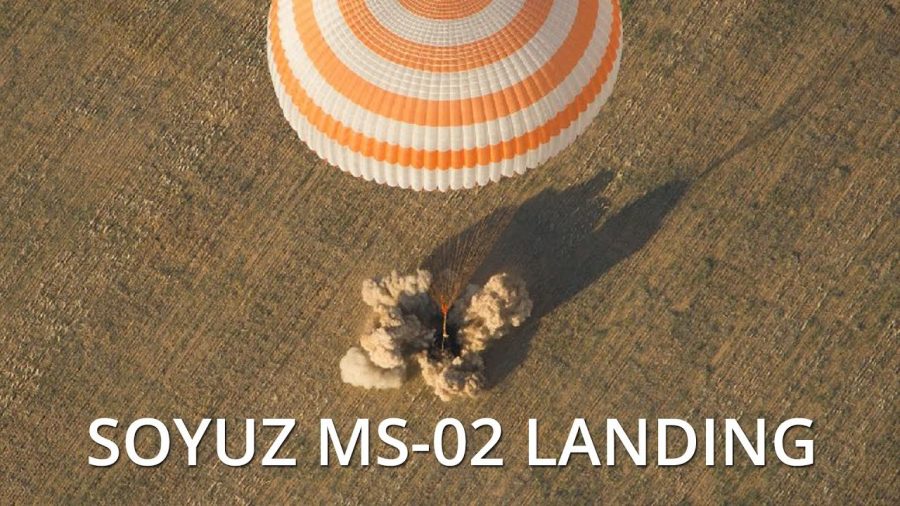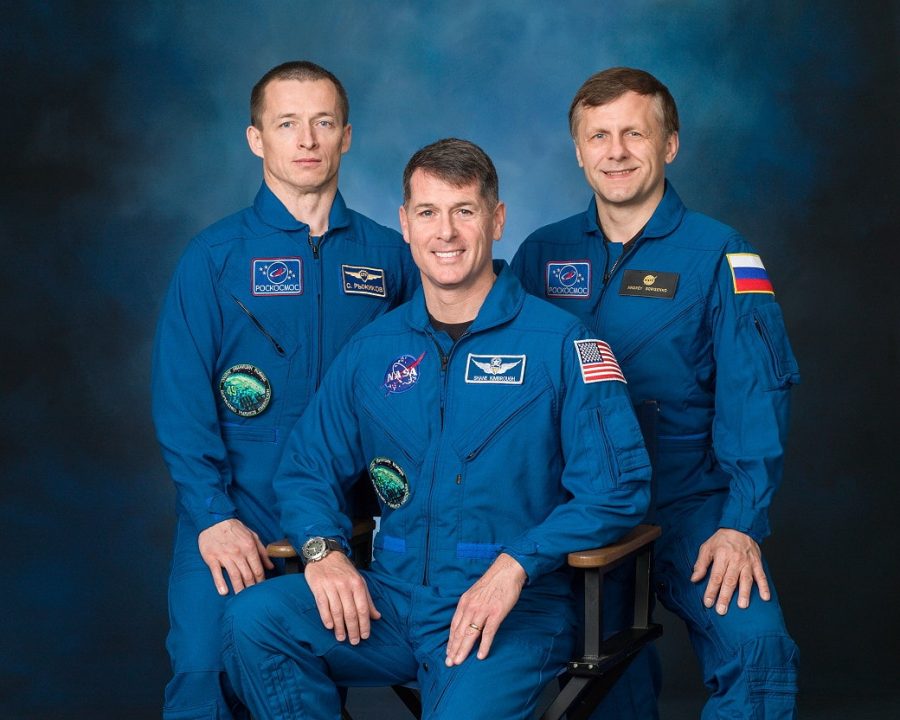Three International Space Station (ISS) astronauts returned to Earth in the Soyuz MS-02 spacecraft on April 10, after spending nearly six months in space.
NASA astronaut Shane Kimbrough and Russian cosmonauts Sergey Ryzhikov and Andrey Borisenko landed at 7:20 a.m. EDT on the Steppe of Kazakh, 92 miles southeast of Dzhezkazgan, Kazakhstan.
The three astronauts boarded the Soyuz spacecraft six hours before it landed, as the hatch connecting the Soyuz and the Poisk docking module was shut and sealed at 12:45 a.m EDT.

The departing crew members said farewell to their other colleagues in the ISS, including Flight Engineers Oleg Novitskiy of Roscosmos and Thomas Pesquet from the European Space Agency. Before their departure, Kimbrough handed over the command of the station to NASA astronaut Peggy Whitson, who will take over controlling the International Space Station.
Pesquet and Novitskiy are scheduled to land in Soyuz MS-03 in June 2017. Whitson will remain in the ISS until September 2017, when she’s expected to land with crew members of the Soyuz MS-04.
Landing of the Soyuz MS-02 began at 12:45 a.m.
The landing was live streamed by NASA, starting from the moment the hatch was closed until they landed in Kazakhstan. After the hatch had been closed, the astronauts spent a few hours depressurizing the vestibule, which is the space between the hatches of the spacecraft. They also performed leak checks and put on their Sokol launch and entry suits.
Afterward, they strapped themselves into their seats in the Soyuz and prepared for undocking, which occurred at 3:57 a.m. EDT. The moment marked the beginning of Expedition 51 for the crew members remaining on the outpost and signaled the end of the trio’s 173 days aboard the ISS.
Four springs in the docking module were needed to push the two spacecraft apart at an initial opening rate of 4.7 inches per second. The spacecraft spent three minutes coasting away from the ISS, and then the thruster on the Soyuz fired to accelerate the spacecraft’s departure to 19.7 inches per second.90 seconds later a second burn occurred, and it pushed acceleration on the Soyuz to 4.9 feet per second, and it set up the spacecraft on the right trajectory for the landing.
The spacecraft reached acceleration to 7.5 miles (12 kilometers) per second, and it maintained that acceleration for three-and-a-half hours until the crew controlled the Soyuz’ SKD main engine to ignite and burn retrograde for over 5 minutes, which slowed the spacecraft down by 420 feet per second.
At 420 feet per second, the acceleration was what was needed for the vehicle to dip into the atmosphere for reentry, which occurred at 6:34 a.m. EDT, 249 miles above the Atlantic Ocean.
Soyuz’s landing in Kazakhstan
The Soyuz has three modules, the Orbital Module, the Descent Module and the Service Module, but only the Descent Module returns to Earth unharmed, the other two burn in the atmosphere.
Twenty minutes after the reentry the three modules separated, and entry interfaced happened at 7 a.m EDT when the Soyuz had reached a speed of 4.7 miles per second.
The heat started to build up around the Soyuz as the friction of the atmosphere started slowing the spacecraft down. The Soyuz is protected by a heat shield, as temperatures outside the vehicle rose up to 2,900 degrees Fahrenheit (1,600 degrees Celsius). The spacecraft quickly started to slow down, causing the three astronauts to feel a force four to five times that of Earth’s gravity.

“We have 4.2 G’s now and we are feeling good,” said Ryzhikov to Mission Control in Moscow during the descent.
At 7:07 a.m. EDT several parachutes began to open, and while the spacecraft was traveling at 702 feet per second, a pair of drogue chutes deployed. The main parachute deployed once the vehicle descended passed 4.7 miles in altitude.
When the Soyuz fell past the 3.4 miles mark, the vehicle jettisoned its heat shield. The vehicle kept dropping height, and when the spacecraft reached three feet off the ground, the soft landing engines were ignited momentarily to cushion the landing.The couches where the crew members were sitting on moved up to absorb the shock of landing. Other cosmonauts who have landed on a Soyuz have described the landing as going through a car crash.
Following impact, the capsule tumbled as the parachute dragged it across the ground for a few seconds, something that sometimes happens during Soyuz landings. After the spacecraft had stayed put, search and recovery teams made their way to the Soyuz capsule to extract the astronauts. The first one to leave the vehicle was Ryzhikov and was followed by Kimbrough and Borisenko.
The three ISS crew members spent 173 days in space
The trio spent 173 days, 3 hours and 15 minuted in space, having flown around Earth inside the International Space Station for a total of 73.2 million miles, or about 2,768 orbits of the Earth.
This marked Kimbrough and Borisenko’s second trip to space and Ryzhikov’s first. Kimbrough, a Georgia Tech graduate, conducted a total of four spacewalks during his stay totaling over 26 hours. Kimbrough also grew lettuce and flew a flag from Georgia Tech’s mascot during his stay.
In ten days, the Soyuz MS-04 will be launched into space with Russian cosmonaut Fyodor Yurchikhin and NASA astronaut Jack Fischer, to join the crew of Expedition 51 aboard the ISS.
Source: Spaceflight Insider
